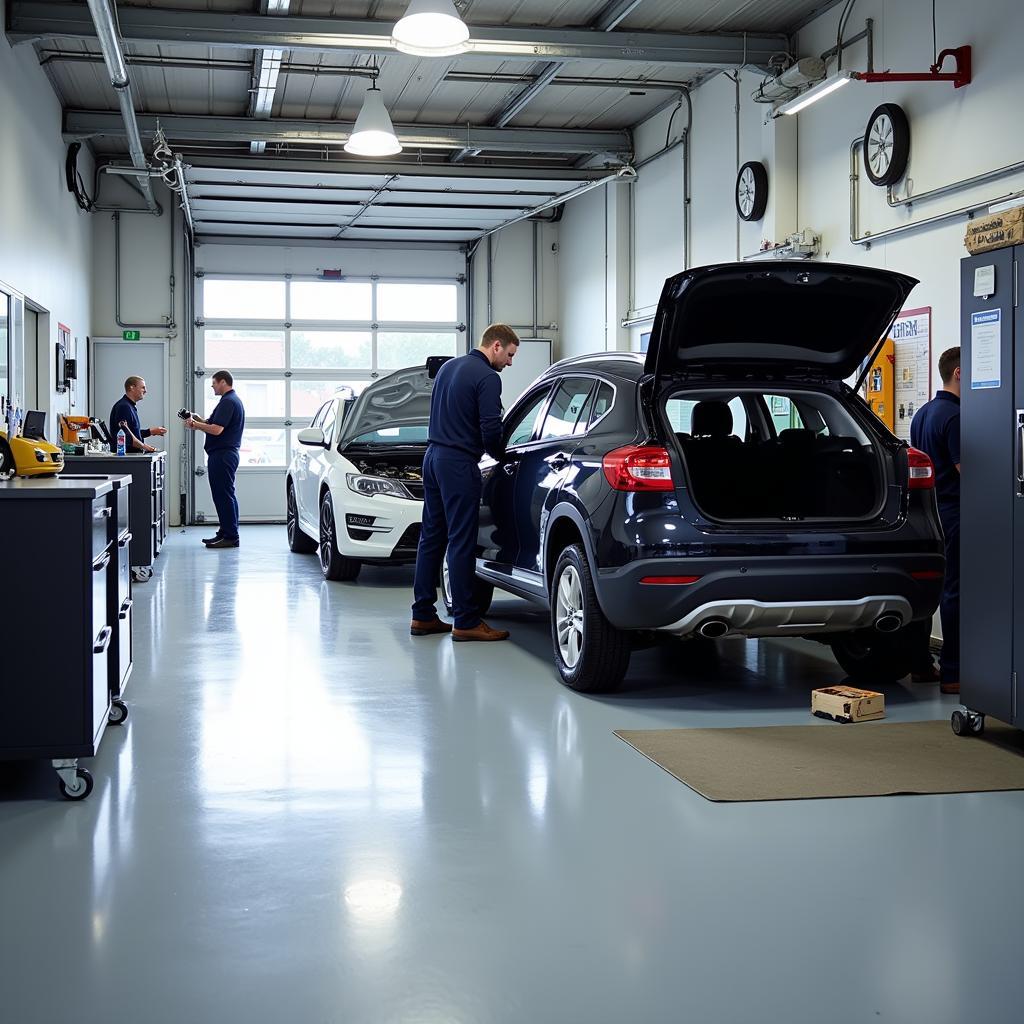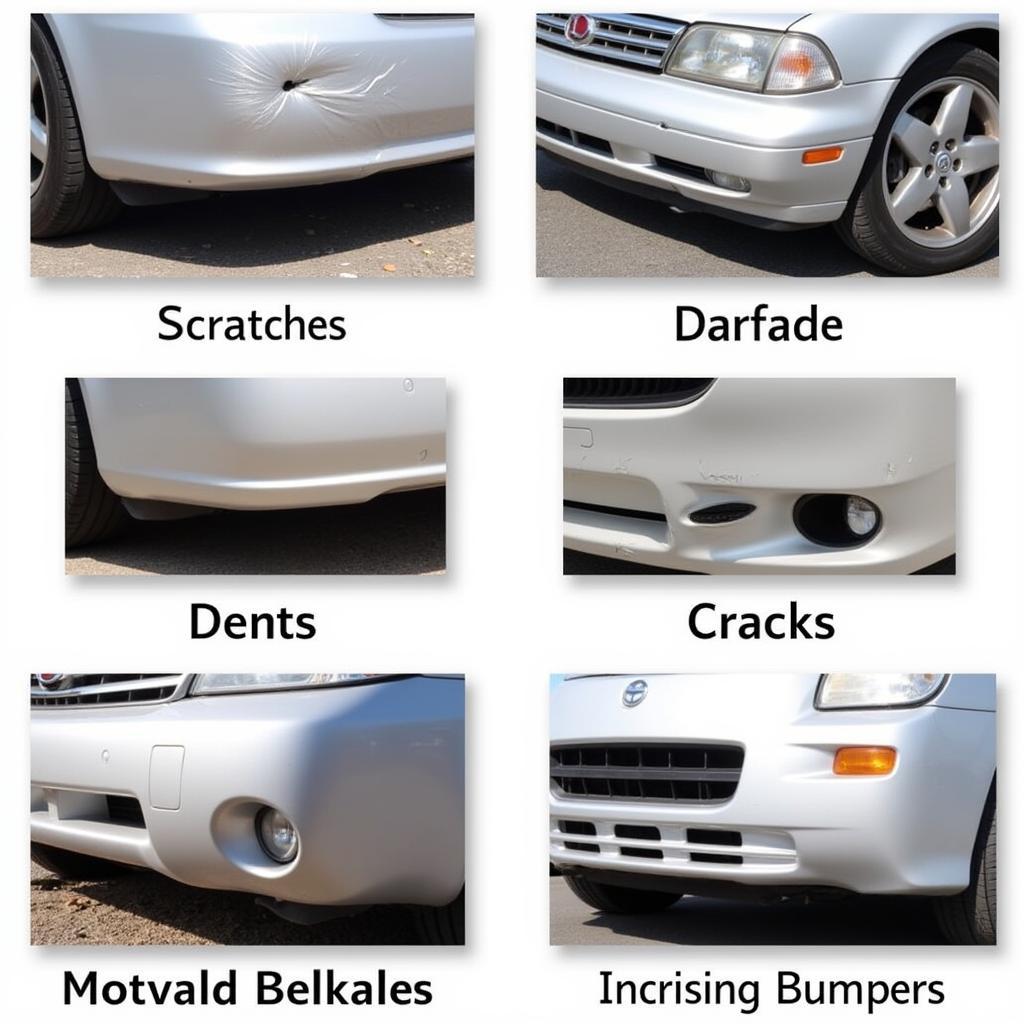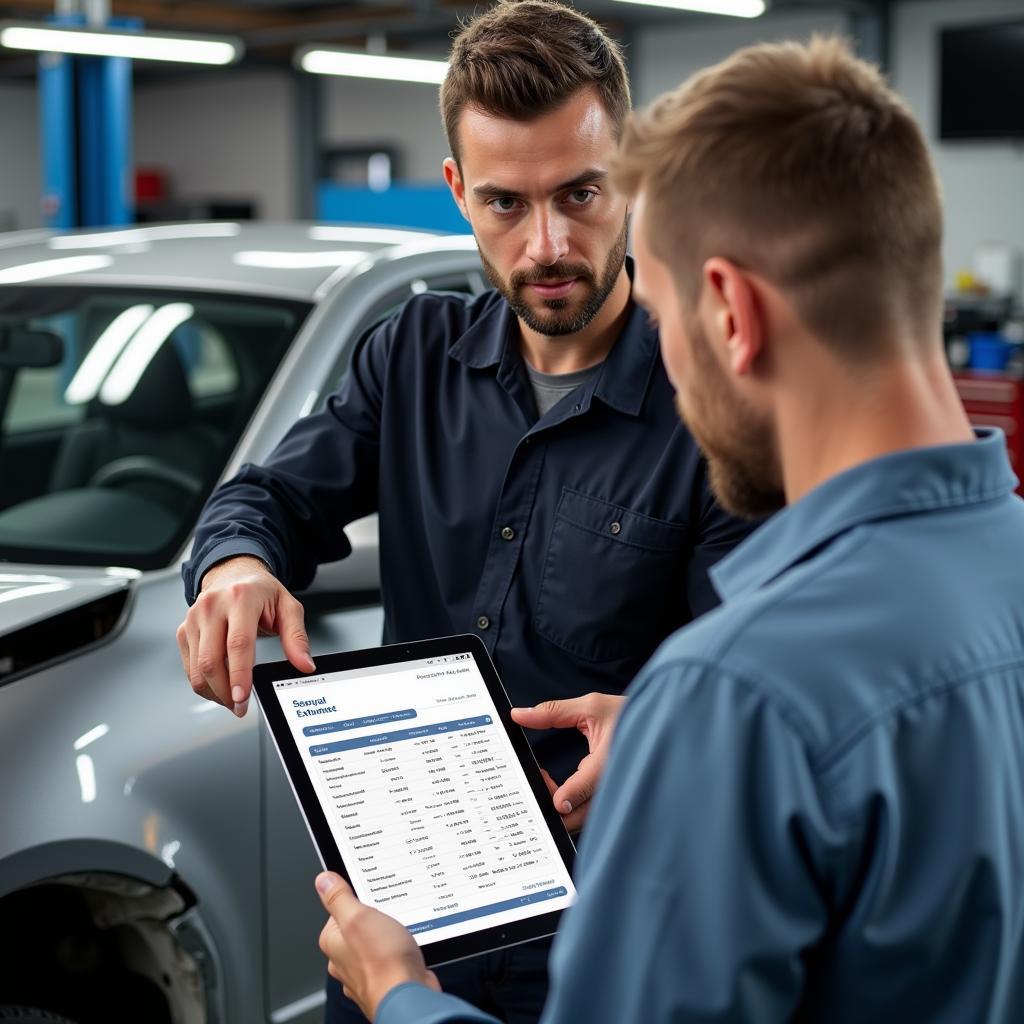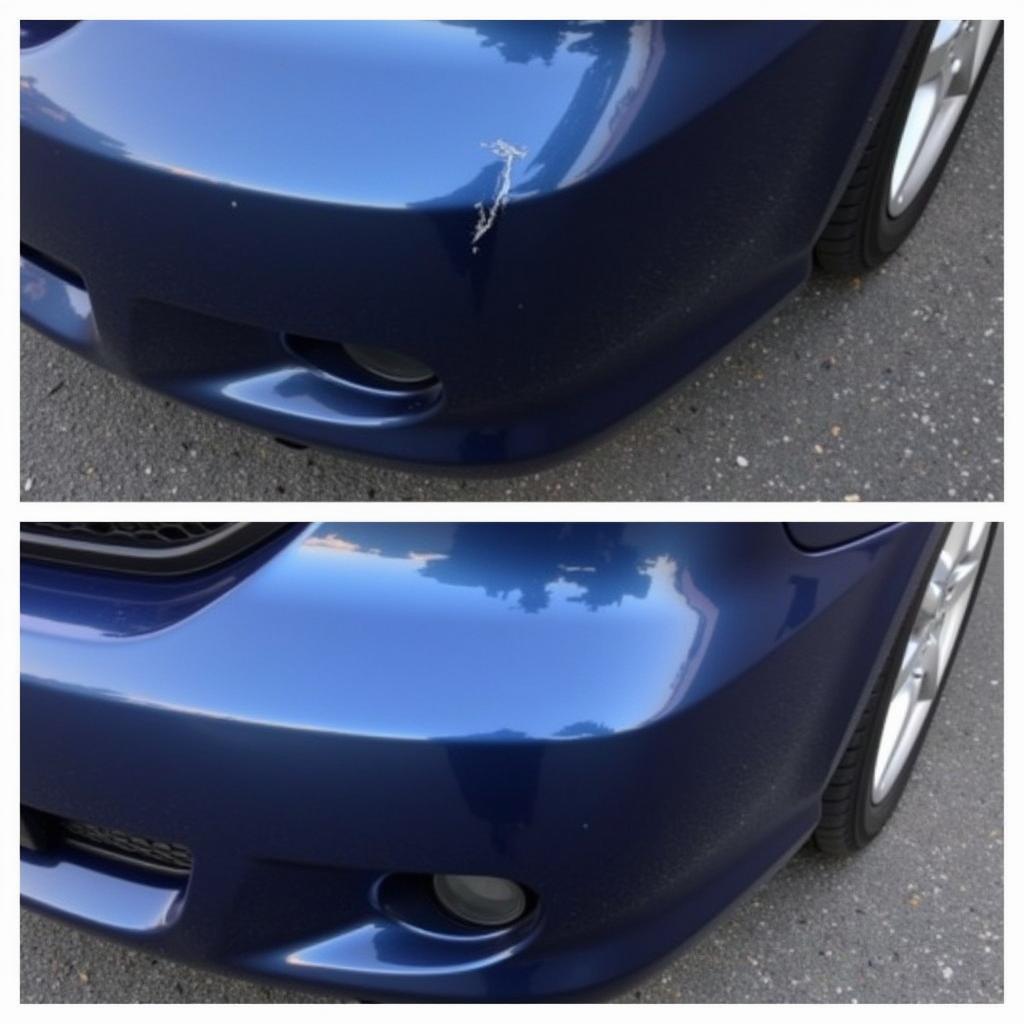Fixing a scuffed or damaged car bumper can seem daunting, but with the right tools and techniques, it’s often a manageable DIY project. This guide will provide a comprehensive walkthrough on How To Repair A Scuffed Or Damaged Car Bumper, saving you potentially significant body shop costs.
Whether it’s a minor scuff, a deep scratch, or a crack, understanding the type of damage and the material of your bumper is the first step. Most modern cars have bumpers made of plastic, specifically thermoplastic olefin (TPO) or polyurethane (PUR). Knowing the material helps determine the appropriate repair method. This detailed guide will cover everything from assessing the damage to achieving a professional-looking finish. Learn how to repair your car bumper effectively and get your car looking its best again! You can even find valuable resources like a plastic car bumper repair kit to make the process smoother.
Assessing the Damage: Know Your Bumper
Before starting any repairs, thoroughly clean the damaged area with soap and water, then dry it completely. This allows for accurate assessment of the damage. Is it a light scuff, a deep scratch, a dent, or a crack? Identifying the extent of the damage will dictate the repair process.
Identifying the Bumper Material
Determining your bumper material is crucial. The most common types are TPO and PUR. TPO is more flexible and often used in areas susceptible to impacts. PUR is more rigid and usually found on higher-end vehicles. Look for a sticker or marking on the inside of the bumper, consult your owner’s manual, or contact your car’s manufacturer.
Repairing Minor Scuffs and Scratches
Minor scuffs and scratches often only affect the clear coat or paint. These can be addressed with compounding and polishing. Using a rubbing compound designed for car paint, gently work the compound into the affected area. Follow up with a polishing compound to restore shine.
For slightly deeper scratches that have penetrated the paint layer, you might need a touch-up paint pen. Clean the area, apply the touch-up paint carefully, and allow it to dry completely.
Repairing Deeper Scratches and Cracks
Deeper scratches and cracks require more extensive repair. For plastic bumpers, a car bumper scuff repair kit is often a viable option. These kits typically include fillers, adhesives, and sandpaper to repair the damaged area.
Steps for Repairing Deeper Damage with a Kit:
- Clean and dry the damaged area thoroughly.
- Sand the area around the scratch or crack to create a rough surface for the filler to adhere to.
- Apply the filler according to the kit instructions, ensuring it fills the damaged area completely.
- Allow the filler to dry and harden.
- Sand the filled area smooth, blending it with the surrounding bumper surface.
- Apply primer, followed by touch-up paint, and finally clear coat if necessary.
Knowing how to repair a scuffed car bumper can save you a trip to the body shop.
Repairing Dents
Dents in plastic bumpers can sometimes be repaired using heat. Carefully apply heat to the dented area using a heat gun or hairdryer. As the plastic heats, it becomes more pliable. Gently push the dent out from the inside of the bumper. Be careful not to overheat the plastic, as this can cause it to melt or warp. Sometimes accessing the back of the dent requires removing the bumper. This technique requires patience and practice. For more complex dents, professional repair is recommended. Looking for information on car bumper scuff and scratch repair? We’ve got you covered.
When to Seek Professional Repair
While many bumper repairs can be done at home, some situations warrant professional intervention. Severe cracks, large dents, or damage to underlying components are best left to experienced professionals.
Conclusion
Repairing a scuffed or damaged car bumper can be a satisfying DIY project. By assessing the damage accurately, choosing the right repair method, and following the appropriate steps, you can restore your bumper and save money. However, knowing your limitations is important. If the damage is extensive or you’re unsure about the repair process, seeking professional help is always the best course of action. You can find more resources on how to repair a plastic car bumper.
FAQ
- Can I repair a cracked bumper myself?
Yes, minor cracks can often be repaired with a plastic repair kit. However, severe cracks may require professional repair. - What is the best way to remove scuff marks from a bumper?
For light scuffs, rubbing compound and polishing are usually sufficient. - Do I need to prime the bumper before painting?
Yes, priming ensures proper adhesion of the paint. - Can I use a regular hairdryer to repair dents?
A heat gun is preferred for better control, but a hairdryer can sometimes work for minor dents. - How much does professional bumper repair cost?
The cost varies depending on the extent of the damage and the location. - What is the difference between TPO and PUR bumpers?
TPO is more flexible, while PUR is more rigid. - Where can I buy a car bumper repair kit?
Car bumper repair kits are available at most auto parts stores and online.
Common Bumper Damage Scenarios
- Parking lot bumps: These often result in minor scuffs or scratches.
- Backing into objects: Can cause dents, cracks, or more significant damage.
- Road debris: Stones and other debris can chip the paint or create scratches.
Related Articles and Resources
- How to Fix a Dent in a Car Door
- Understanding Car Paint Repair Techniques
- DIY Car Maintenance Tips
Need Help?
For expert assistance with your car repair needs, contact us via WhatsApp: +1(641)206-8880 or Email: [email protected]. Our 24/7 customer service team is ready to assist you.




